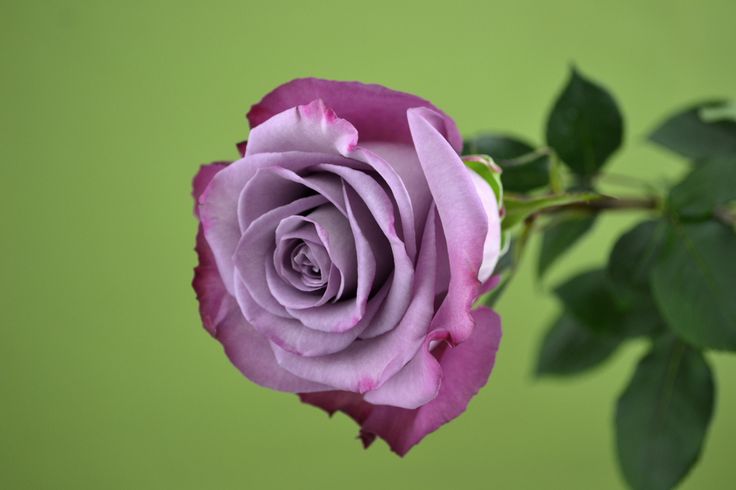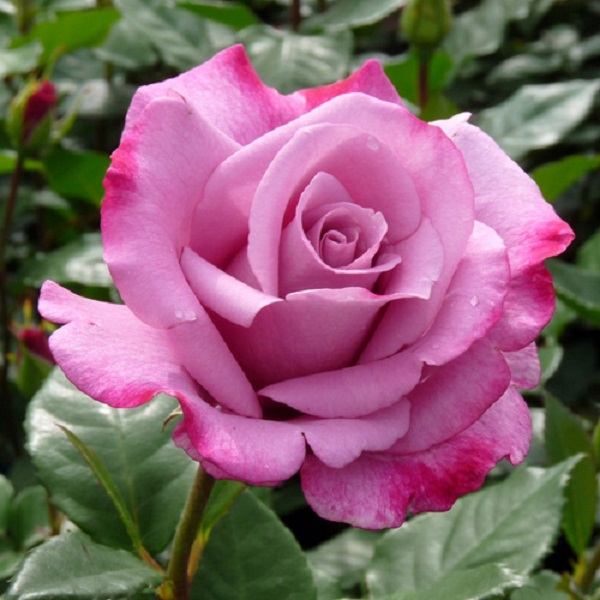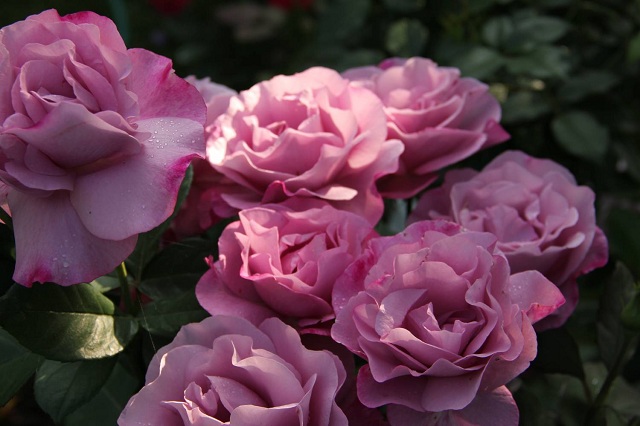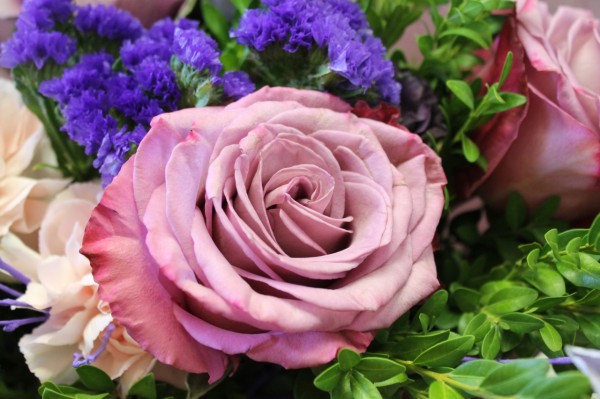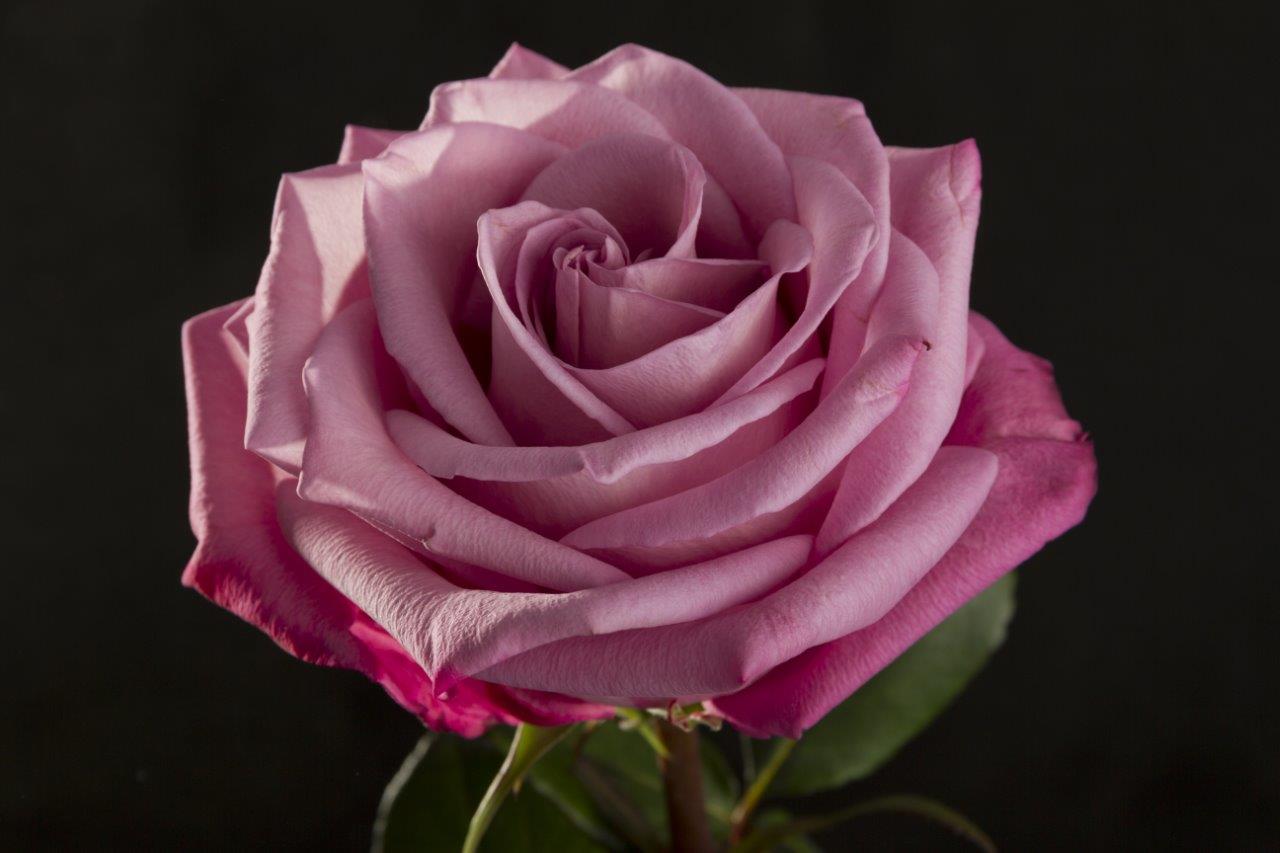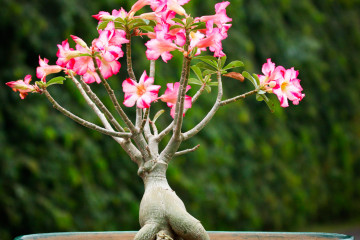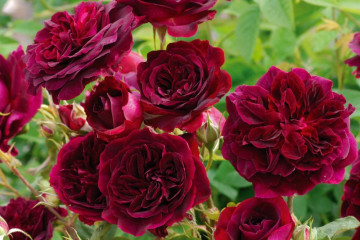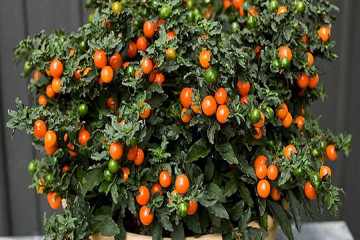Rose Moody Blues - basic rules for keeping a plant
Content:
The charming Moody Blues rose with delicate lavender petals will leave no one indifferent. This lush blooming beauty will delight the eye of a grower throughout the summer.
Rose Moody Blues (Moody Blues) - what is this grade
Rose Moody Blues (Moody Blues) refers to perennial hybrid tea varieties. It tolerates cool and rainy weather well. In the cold, the color of its petals becomes more saturated than in warmth.
The bluish-lilac rose was bred in the UK, in the Flyerꞌs Rjses nursery, which has existed since 1912. During this time, its specialists have bred about 200 different varieties of roses.
The new variety became famous for its unusual color and hardiness. It can be grown in northern countries where there is little heat and sun.
Brief description, characteristic
Moody Blues is a large rose: each flower reaches 12 cm in diameter. Up to 3 flowers can grow on one branch, each of which consists of 25 delicate petals. The roses give off a pleasant aroma, which can increase or decrease, depending on the weather. A slight cold snap, as a rule, makes the smell stronger and richer.
The delicate blue, lilac or lavender petal of a young bud has a purple edging along the upper edge. When the bud opens, its petals will take on a lilac color with a slight silvery tint. Thanks to this amazing feature, this variety is different in description from other roses.
- The diameter of a rose bush is no more than 50-60 cm.
- The bush consists of strong erect branches up to 100-120 cm high.
- On the lower part of the branches, glossy leaves of a rich emerald green grow abundantly.
- This plant has huge thorns.
Advantages and disadvantages of the variety
Many growers choose Moody Blues because they see its undeniable advantages over other hybrid tea varieties.
Advantages:
- Blooms profusely during the summer.
- Has an unusual color.
- Resistant to cold and high humidity.
- Has a strong immunity to many diseases, including bacterial and fungal.
These adorable flowers have some drawbacks, but they can be considered an extension of the rose's virtues.
Minuses:
- The buds fade very quickly, but new ones appear in their place.
- The color of the petals can bring sadness.
Use in landscape design
The queen of flowers always takes center stage in any landscape composition.Such an unusual flower as Moody Blues will look great in any combination.
Moody Blues rose should be planted in a small flower bed, where no more than 3-5 bushes will fit. Other perennials are placed nearby. The flower bed should be located in a conspicuous place, for example, near the gazebo. Miniature reservoirs, figures, arches are used for decoration.
Growing a flower, how to plant it in open ground
Experienced growers know how to grow and care for hybrid tea varieties. Moody Blues is an unpretentious rose, but it needs care and attention.
In what form is the landing
It is best to grow a rose from seedlings and cuttings cut from a healthy adult bush. During transportation, the roots of seedlings are often damaged, so they must be purchased in strong containers.
It is best to buy seedlings from flower nurseries. If a Moody Blues bush is already growing in the garden, then you can cut a few cuttings from it.
What time is the boarding
The optimal time for planting is mid-April, when the soil warms up to 10-12 ° C. You can plant cuttings in the fall, in mid-September, but the soil temperature should remain at the same rates. Many growers argue that spring seedlings take root worse and grow slower, in contrast to autumn ones.
Location selection
It is necessary to choose a place that is closed from wind and drafts. The landing site should be warm and sunny. It is important that the groundwater lies at a depth of 1.5–2 meters and does not come close to the surface of the earth.
How to prepare the soil and flower for planting
It is advisable to purchase seedlings with a closed root system (in a container or pot). If it is open, then you need to carefully check its condition.
What should be a healthy seedling:
- three whole escapes without damage;
- branched root system;
- many small roots.
Special attention should be paid to the quality of the soil. It should be loose and breathable.
It is desirable that the level of its acidity (pH) lies within the "golden mean" (more than 4, but less than 6). If the acidity of the soil is increased, it is treated with limestone. If the soil contains a lot of alkali, then it must be fertilized with compost from oak leaves, peat moss or pine needles.
Planting procedure step by step
First you need to prepare a place for planting, and then place the seedlings there.
Step-by-step instruction:
- Dig holes with an area of 40 × 40 cm and a depth of 50–70 cm. The distance between the holes should be at least 80–90 cm.
- Drainage is placed on the bottom: for sandy soil - clay, for heavy soil - expanded clay or pebbles. The thickness of the drainage layer should be 5–7 cm.
- Fertile soil is poured on top of a slide.
- A seedling is placed on this soil, its roots are straightened and carefully sprinkled with earth. The root collar should be underground - 10 cm below the soil surface.
- The earth must be slightly compacted so that there are no large voids in it. Do not tamp it too hard, it must be loose.
- The seedling is watered abundantly several times. Each bush will need 1–1.5 buckets of water.
- After planting, the soil must be mulched with pine needles or peat.
A young seedling must be well looked after, then he will thank the owner with lush flowering.
Plant care
Roza Moody Blues does not require complex care, but nevertheless it is necessary to create favorable conditions for it.It is necessary to regularly water and feed the bush, trim the shoots, mulch and loosen the soil.
Watering rules and humidity
In hot weather, plants need frequent watering. The Moody Blues rose should be watered 1-3 times a week. One bush will need 15 liters of water.
Immediately after watering, the soil at the roots must be mulched. If you don't have mulch on hand, you can wait until the soil dries a little, and then loosen it.
If there are a lot of flowers in the garden, it is best to install an automatic watering system. However, roses can be watered manually from a watering can.
Top dressing and soil quality
Rose Moody Blues loves fertilized soil, so it needs constant feeding. In the spring, at the very beginning of the growing season, the first feeding is done with complex fertilizers. These dry complex fertilizers should be poured under the root every month during spring and summer.
In August, and then in autumn, the bush is fed with phosphate-potassium fertilizers. Thanks to such a "diet", the rosette is well prepared for the winter cold. During this time, nitrogenous fertilizers should not be used, because they stimulate the growth of branches and foliage.
Pruning and replanting
In the spring, the winter shelter is removed from the bush. 7 days after that, the first pruning is done. It is necessary to cut the branches strongly and make a bush 30 cm high. This stimulates the growth of shoots. During the summer months, remove diseased, broken and weak shoots, as well as un-fallen buds.
Strong pruning is done again in the fall. It is necessary to leave only 4 of the strongest branches with a height of 45 cm. In this form, the rose is covered for the winter.
Features of wintering a flower
At the end of autumn, the bush no longer needs to be watered, fed and loosened, but it is necessary to regularly weed the weeds. It is also necessary to treat the flower from pests using preparations containing copper.
In October or November, a shelter is made for the plant for the winter. The bush is spud so that it rises slightly above the surface of the earth. Then they put small supports and cover the flower with spruce paws, peat and sawdust. A plastic film is pulled from above and fixed on the supports.
Blooming rose
Abundant and lush bloom is one of the main advantages of this rose. With good care, it will delight the grower for a long time. With age, the petals will acquire an increasingly saturated lavender hue.
A period of activity and rest
Rosa Moody Blues blooms several times a year. The first buds appear in early June. Flowering ends in early November.
From the end of autumn to the first days of spring, there is a period of rest, when the rose rests under winter shelter.
Care during and after flowering
During the flowering period, the rose should be regularly watered and fed, and the soil near its roots should be loosened and mulched. When Moody Blues has faded, she is cut off and wrapped up for the winter.
What to do if it does not bloom, possible reasons
Due to improper care, the rose stops blooming. It is necessary to follow all the recommendations for care, otherwise you can lose its beauty and aroma.
Why Modi Blue doesn't bloom:
- not enough moisture;
- unsuitable soil;
- there is too much nitrogen in the ground;
- dark, lack of light and warmth;
- fungal diseases;
- pests;
- incorrect cropping or its complete absence.
If there is an urgent need, the rose bush is transplanted to another place in more favorable conditions. You need to measure the perimeter of an adult bush and dig a hole of the same size so that the flower is not crowded. When transplanting, the entire earthen lump is transferred to a new place. It is best to replant the plant in spring or autumn, but as a last resort it can be done in summer on a cloudy day. Before the procedure, old shoots are cut off, and young ones are shortened to 50 cm.
Flower propagation
Moody Blues can be propagated either by cuttings or by grafting onto rose hips. Wild rose hips must have healthy roots and leaves. Most often, the flower is propagated by cuttings.
When is it produced
During autumn pruning, several young and healthy cuttings are cut from the plant. They are hardy and can easily survive the winter.
Detailed description
For harvesting cuttings it is necessary to choose a mature shoot 4–5 mm thick.
How to propagate Moody Blues:
- Count 3-5 healthy buds on the selected shoot and cut off the cutting. It is cut obliquely from the bottom, but the top cut should be straight.
- A preparation is applied to the lower part of the seedling to accelerate root growth.
- Make a hole and lay out the bottom with compost and grass. Then put in good quality soil.
- Place the cuttings at a 45 ° angle. 1-2 buds should remain above the ground.
- Then the seedlings are watered and covered with cut-necked plastic bottles. Holes must be made in the bottles so that air can flow to the plants.
- Greenhouses from bottles are insulated with fallen leaves and covered with burlap.
In a few days, the seedlings will take root. By the spring they will get stronger and grow up.
Diseases, pests and ways to control them
Despite her endurance and strong immunity, Moody Blues is susceptible to several diseases. She also suffers from pests.
Powdery mildew can attack bushes that are planted too close to each other. The increased humidity of the soil and air also leads to infection. For prevention and treatment, the rosette is sprayed with Chistosvet or Chistosvet BORO.
The rose is threatened by pests such as aphids, leafworms and spider mites. For protection, the bush is treated with "Pure Blossom BAU". You can protect yourself from ants with the help of the drug "Anteater".
Moody Blues takes pride of place in the color encyclopedia. This rose gives a wonderful aroma and bewitches the eye with its extraordinary color - lavender or bluish-lilac flowers. This hardy variety can withstand rain and cold.
